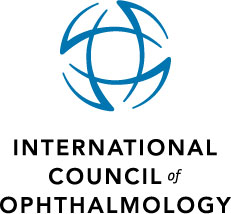49-year-old African American male with a history of diabetes, hypertension, and hyperlipidemia. On initial exam, patient presents with complaint of blind spot in inferior visual field. Patient was diagnosed with a retinal vein occlusion in the superior temporal retina of the left eye; the quadrant most commonly affected, occurring 63% of the time. Fluorescein angiography was used to assess the extent and location of retinal capillary nonperfusion, as shown in the image below. Testing Humphrey visual field showed visual field defects that correspond to ischemic retina. On an interesting note, the depressed areas of the visual field is inferior, as the vein occlusion was superior; this is expected since the superior field of the eye is responsible for inferior vision. Onto another interesting item on visual field is that the vein occlusion respected the horizontal midline as seen in visual field test and corresponds to the vein occlusion. According to a study done in 2011 by Archives of Ophthalmology, patients with a retinal vein occlusion are shown to be twice at risk for cerebrovascular accident, but not heart attack.
-------------------------- --------------------------
-------------------------- --------------------------
-------------------------- --------------------------
-------------------------- --------------------------
-------------------------- --------------------------
-------------------------- --------------------------






